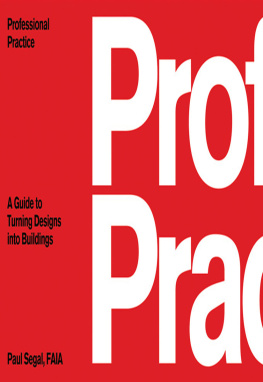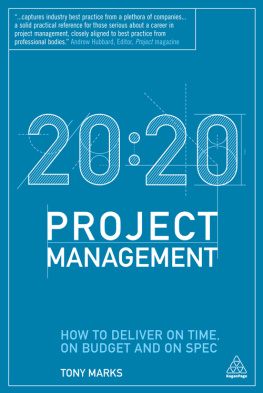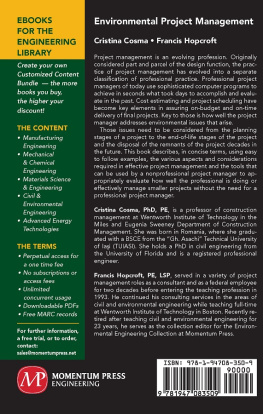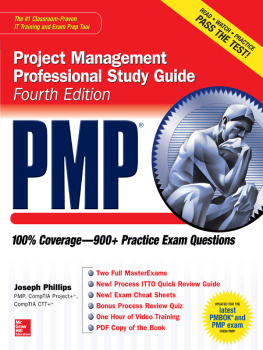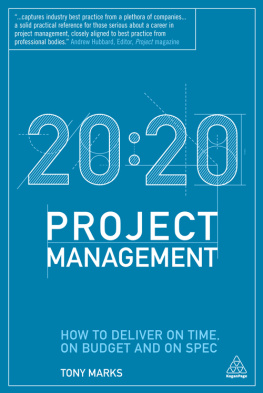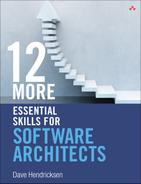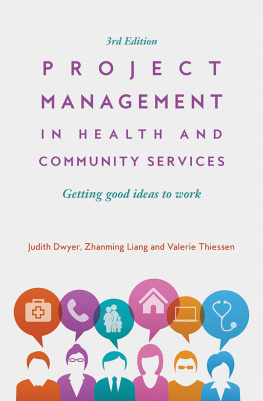Professional Practice
A Guide to Turning Designs Into Buildings
Paul Segal, FAIA

WW Norton & Company
New York London
Copyright 2006 by Paul Segal
All rights reserved
For information about permission to reproduce selections from this book, write to Permissions, W. W. Norton & Company, Inc., 500 Fifth Avenue, New York, NY 10110.
Composition by Ken Gross
Production manager: Leeann Graham
Library of Congress Cataloging-in-Publication Data
Segal, Paul.
Professional practice: a guide to turning designs into buildings / Paul Segal.
p. cm.
Includes index.
ISBN: 978-0-3937-3372-3
1. Architectural practiceUnited States. 2. Architectural services marketingUnited States. I. Title.
NA1996.S44 2006
720.688dc22 200505849
W. W. Norton & Company, Inc., 500 Fifth Avenue, New York, N.Y. 10110
www.wwnorton.com
W. W. Norton & Company Ltd., Castle House, 75/76 Wells Street, London W1T 3QT
Contents
Preface
After teaching the Professional Practice course at Columbia University Graduate School of Architecture, Planning and Preservation (GSAPP) for almost twenty years, I realized that one of the biggest problems with the course has been the lack of a textbook that covers the topic succinctly and from an average practitioners point of viewwarts and all, the exhilarating parts and the disappointing parts. One of the advantages of teaching this course, subtitled Turning Designs into Buildings, is that it benefits from a very low level of expectation from the students. Typical end-of-year course evaluations begin with I expected this course to be painfully boring, but since it was required for graduation I had to take it, and it actually was a lot better than I expected. While having no desire to become an author, I really wanted there to be a good book for this course, a variation of which every architecture student has to take. Maybe a shorter (not to mention lighter) book than the alternative would be appreciated.
When James Polshek was dean at Columbia GSAPP and hired me, he broke with the tradition of selecting the business partner of a large firm to teach Professional Practice and instead chose a practicing architect (me) more interested in and known for design than for business . Jim wisely suggested that the focus be what architects should know to protect their designs, from concept through completion. These issues have been central to my courses, and they are basic to this book.
The second purpose of the course and of this book is to persuade architects, starting during their education and carrying through their time as employees and even as principals, should they elect to practice on their own or in a group, that they add value to the building endeavorfor the client and for society. This sounds lofty. It is. It is also, when architecture is done right, true. Good planning and careful, thoughtful design help clients utilize all their resourcesthe land, materials, time, money, and effort that go into a projectmore efficiently and wisely and obtain a result that is more suitable and efficient for its purpose, more durable and maintainable, and a timeless source of joy for the users.
Understanding planning and design issues, and how the services to accomplish them are provided, is essential. Explaining these issues clearly to clients is critical. If clients expectations match our efforts, they will not be disappointed; they will appreciate our work on their behalf. To the extent that there is a difference between what they think we will do for them and what we want to and can do for them, that difference between expectation and reality will always be a problem. If clients think we can guarantee a contractors work, they will be angry at us when they find we cant. (I will explain how to get the best possible results from a contractor in a variety of situations, but that is very different from a guarantee .)
A few comments about the contents of this book. While I often say, Here is the way something should be done (or not done), does that mean it is actually the only way it should be done, or that it should always be done that way? Absolutely not! One of the basic aspects of being a professional is that every circumstance should be carefully examined and considered, to see if the general response or action (which is what I will discuss in the following chapters) is appropriate, or whether the specific situation requires a different answer. Being a thoughtful professional includes evaluating many situations that are not at all black-and-white. (If they were, we could be replaced by well-programmed robots.) Lots of issues are gray, with many shades and nuances. This makes practice complicated. Which is what makes it interesting!
You will notice there is no chapter (or even section) entitled Ethics. Do not construe this omission as a lack of interest in the subject on my part. Rather, it is based on a firm belief that ethical behavior is a core part of a professionals entire life and imbues all activities and actions. I allude to ethics in many places: treatment of clients, staff, and society; disclosure of possible conflicts of interest; design considerations of the planets resources; fees for services; competitions; and behavior by and to professionals. Ethics always boils down to a few fundamentalstreating others as you would like them to treat you, being honest and forthright, and serving your clients and societys interests. Being ethical will definitely provide you with more success and fun as an architect. (If you dont feel comfortable about doing something, or wouldnt want anyone to know what you are doing, then please consider whether you should be doing it at all.)
A long and complex process takes place between the time you sketch and model an idea and the time you can walk around in its finished manifestation. I have tried to explain the various steps in a short and simple text. I hope you have as much fun reading it as I did writing it, and as I do teaching it. And I hope that learning how to practice professionally helps you love doing architecture as much as I do.
Acknowledgments
Many people contributed to the stew of ideas that make up this book, from my early childhood to last week. I thank:
Our clients, whose trust and optimism give us the reasons to practice, and from whom we have learned so much about so many fields.
Our talented and dedicated office colleagues over the last thirty-five years, with whom we have shared the excitement and lessons of practice, many still working with us, many now heads of their own successful offices (probably our best accomplishment).
Our many consultants who have shared their expertise and judgment with us, among them especially structural engineer Robert Silman, who has helped us for over thirty years, and construction attorney Larry Gainen, who has provided business and legal wisdom; I am grateful that all have as much common sense and thoughtfulness as technical knowledge.
The associated architects with whom we have shared work on projects, and from whom we had great lessons in professionalism, particularly Elliott Glass, Barton Myers, and Bernie Rothzeid and his partners.
The contractors we have worked with, whose management skills, construction knowledge, drive, and enthusiasm have helped us serve our clients and realize our projects, and the skilled craftspeople who have added their personal skills, commitment, and expertise, all necessary to create high quality construction.
My friends and colleagues at the AIA New York Chapter, with whom I have worked for the betterment of the profession: Peter Samton, a true mentor; Randy Croxton and Bart Voorsanger, who have shared the leadership trenches with me; David Spector, who led me to writing this book.

